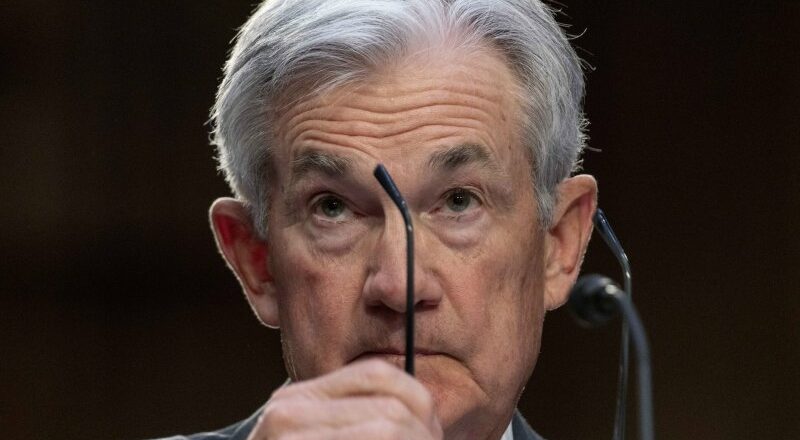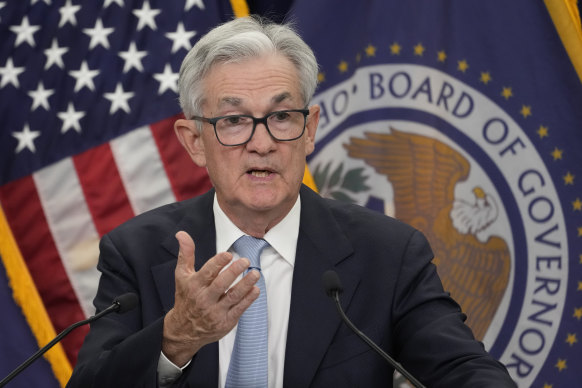US Federal Reserve set to pause and assess effect of rate rises
Save articles for later
Add articles to your saved list and come back to them any time.
US Federal Reserve policymakers are about to take their first break from an interest-rate rising campaign that started 15 months ago, even as they confront a resilient US economy and persistent inflation.
The Federal Open Market Committee on Wednesday in the US is expected to maintain its benchmark lending rate at the 5 per cent to 5.25 per cent range, marking the first skip after 10 consecutive increases going back to March of last year. While officials’ efforts have helped to reduce price pressures in the US economy, inflation remains well above their goal.
Fed Chair Jerome Powel has suggested he favours a break from increasing rates to assess the impact of past moves and of recent banking failures on credit conditions and the economy.Credit: AP
Investors’ focus will be on the Fed’s quarterly dot plot in its Summary of Economic Projections, which is expected to show the policy benchmark rate at 5.1 per cent at the end of 2023.
By contrast, markets are pricing in the possibility of a quarter-point rise in July followed by a similar-sized cut by December, and some Fed policymakers have emphasised that a pause in the hiking cycle shouldn’t be seen as the final increase.
Fed chair Jerome Powell, who’ll hold a press conference after the meeting, has suggested he favours a break from hiking to assess the impact both of past moves and of recent banking failures on credit conditions and the economy. His commentary will be scrutinised for hints of the committee’s plans at its following meeting next month.
Fed officials will have new consumer price index data in hand when they start their monetary policy deliberations on Tuesday. While central bankers target a separate inflation measure for their 2 per cent goal, the closely watched CPI report is expected to show still-stout underlying price pressures.
The core gauge, which excludes volatile food and energy prices, is seen rising 0.4 per cent from a month earlier. That would mark the sixth-straight month that core inflation has increased by that much or more, and helps to explain why interest rates may stay elevated for longer.
Monthly advances of that magnitude have made it difficult for underlying inflation to cool quickly. On a year-over-year basis, the core CPI is expected to rise 5.2 per cent, the slowest pace since November 2021. The overall CPI is projected to recede to 4.1 per cent. While still uncomfortably high, gradually moderating inflation provides some space for the central bank to pause.
A report on Wednesday is projected to show further disinflation at the producer level, with a core gauge seen rising at the slowest annual pace in more than two years as goods costs continue to settle back.
May retail sales round out top US economic data this coming week. The value of purchases was probably little changed during the month, consistent with softer consumer demand for merchandise.
Further north, Canada’s tight housing supply will be a focus after a revitalised real estate market helped prompt a resumption of rate increases. Data on Thursday will show whether housing starts kept falling in May, eroding the potential supply of homes amid record immigration, and if existing home sales kept rising too.
Elsewhere, the European Central Bank is likely to keep raising rates, the Bank of Japan may remain on hold, and Chinese monetary officials could avoid adding stimulus for now.
Bloomberg
The Business Briefing newsletter delivers major stories, exclusive coverage and expert opinion. Sign up to get it every weekday morning.
Most Viewed in Business
From our partners
Source: Read Full Article


